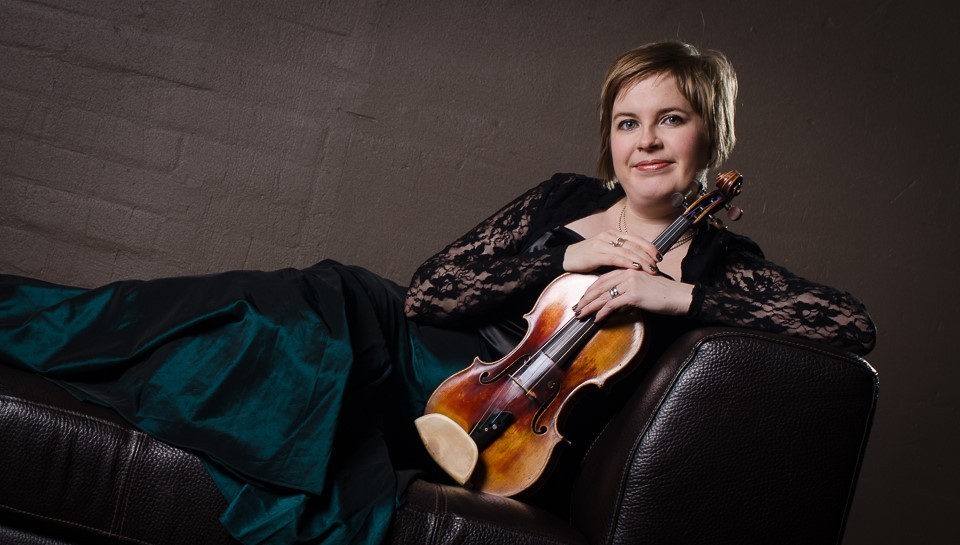My first visit to Kuhmo was in summer 1989, when I was four. I was listening to a Chamber Music Festival concert with my parents in Kuhmo Church. I would need to continue studying the violin for more than a decade before my teacher at the time, Antti Laasanen, felt he could recommend applying for a Kuhmo Chamber Music course. I was lucky to be accepted and my first fortnight of chamber music began in July 2002.
Many schools’ exist in the violin-playing world, and I got to know quite a few of them during the years I spent on the Kuhmo courses. Each teacher had his or her own style and background from which the young player could learn a lot. My teachers included Constantin Bogdanas, Priya Mitchell and Wouter Vossen. The first time I applied for a course, my own teacher gave me a couple of good pieces of advice: all the teachers at Kuhmo are so good that it doesn’t matter whose pupil you are; it’s enough just to be there. The other, possibly even more important piece of advice was: listen to lots of concerts. Listening to concerts, you learn a tremendous amount about music and interaction without even realising it. To my mind, those two pieces of advice are still valid the first time young players apply for the courses!
That first summer, I was immediately particularly impressed by the way everyone seemed to be one big family in a little Finnish town far from everywhere. Who you happened to sit next to at a concert or in the canteen was neither here nor there, because people were all friendly and talked to each other, and wherever you went, you heard music. Maybe this is part of the spirit of Kuhmo that audiences rave about and that makes them come back again year after year as well.
After a Kuhmo-free year in 2008, I headed back again. It just so happened that I had ended up doing lots of gigs page-turning for pianists and it was in this capacity that I found myself in Kuhmo. And it certainly was quite a job: a two-week festival with lots of totally unfamiliar repertoire and mammoth works for up to eight hands is no job for a novice page-turner. Many are the times when my pulse was racing madly as I went on stage to flip pages over after a mere final rehearsal while looking very calm, so I wouldn’t accidentally make the already tense pianist more nervous than ever.
I became extremely familiar with the Kuhmo backstreets and short cuts in those two page-turning summers, dashing to work on one of the bikes that have become something of a Kuhmo festival icon. I also got to know many of the great local people working for the festival, especially the young locals hired as roadies. And I was even known to take a nap or two on one of their sofas in between rehearsals. As a festival worker, I best became aware of the immense amount of work, invisible to the audience, done by the organisation to make the concerts a success. During my page-turning summers I learnt a tremendous amount about the importance of the unseen work and about music, and above all about working under stress. Phew!
While a student at the Sibelius Academy, I spotted an announcement on the notice board in autumn 2010 saying that Kuhmo Chamber Music was inviting applications from young chamber musicians. I jumped at the idea. I had just won the audition for a second violin vacancy with the Finnish Radio Symphony Orchestra so I already had some suitable repertoire. I did so well in the audition that page-turning could take second place and I was able to change jobs at Kuhmo Chamber Music. Since summer 2011 I have been one of the festival’s young chamber musicians and had a chance to play the most varied of works with numerous artists. I’ve especially enjoyed playing with violinists who’d taught me on my courses.
During these summers in Kuhmo, I have had some unforgettable experiences, met some fantastic characters and above all enjoyed the playing, the people and the Finnish summer – apart from a few freezing, wet, windy days. Other pleasures have included the Kaesa “rönttöset” and the Salakamari’s wonderful food and fine wines. Kuhmo has left an indelible musical and memory-rich impression on me as, I’m sure, it has on many others. It is one that will never fade.
Helmi Horttana
2016
